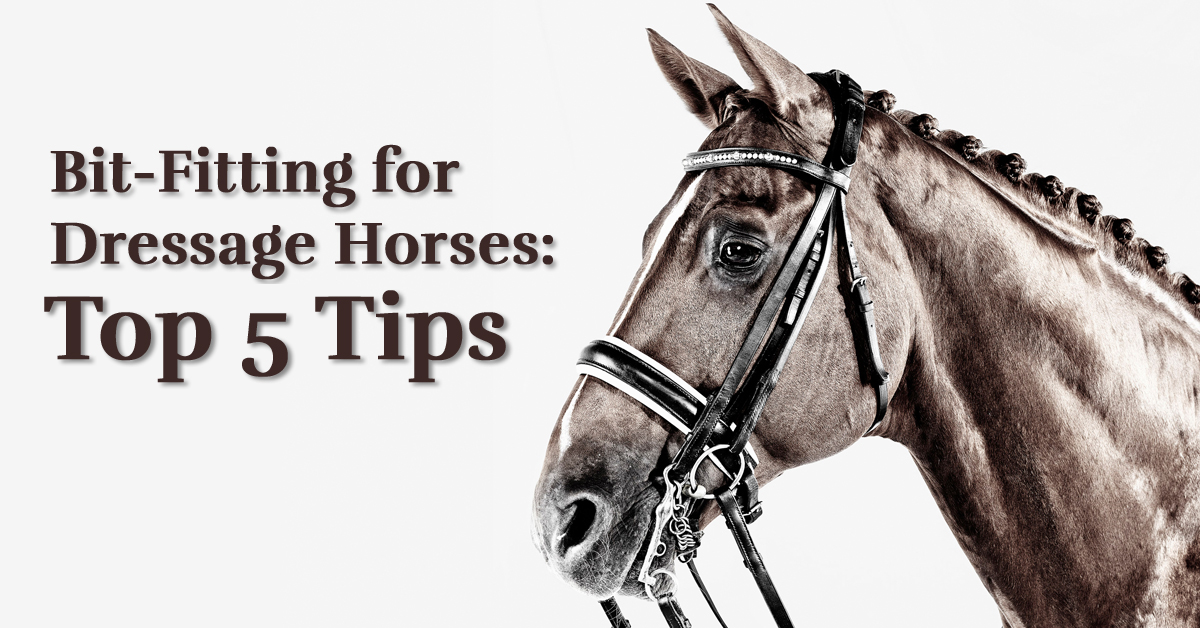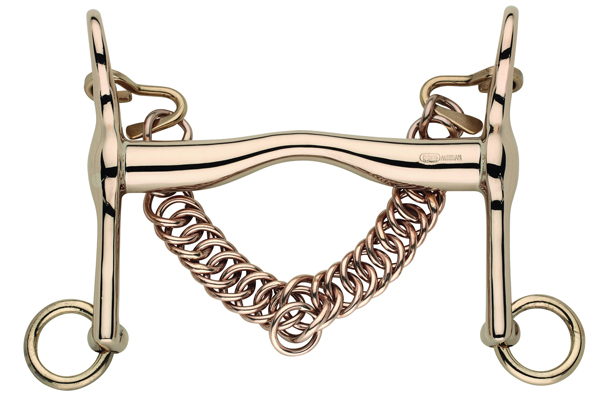The bit is a powerful tool that has helped humans communicate with horses for thousands of years. Using the incorrect bit, or an incorrectly fitted bit, however, can be a source of fear and frustration for both horse and rider. That’s where lorinery science – the science of bit fitting – comes in.
A properly-fitted bit, attached to a correctly-fitted bridle, allows the rider to influence the horse through gentle pressure on the horse’s poll, tongue, palate, lips and the bars of the mouth, without causing pain or injury to the horse. (For a bitting basics refresher, check out HorseSport.com’s article on bit fitting).
The basics of correct bit fitting are the same across all disciplines. When it comes to bit selection, however, each discipline has its own unique considerations. Equestrian Canada recently hosted two webinars with certified bit fitter Tammy Levasseur to discuss the specifics of bit fitting for the dressage horse. Here are our top 5 takeaways from the webinars:
1. Begin with the bridle
Even an expertly-fitted bit won’t have the desired result if it’s attached to a poorly-fitted bridle. While Levasseur does recommend choosing anatomically-shaped crownpieces with ample padding to reduce poll pressure, she cautions that some of the newer dressage bridle styles that claim to be anatomically designed can interfere with the action of the bit. And don’t forget the two-finger rule when tightening the noseband. A too-tight noseband prevents the bit(s) from working correctly, as well as being painful for the horse.

Levasseur demonstrates how a simple device consisting of a flat disc and a piece of string can be used to measure the width of the mouth where the bit sits. (Alison King photo)
2. Size matters
Horses come in all shapes and sizes and so do their mouths. Choosing a bit without knowing your horse’s mouth size and shape is like buying a pair of boots without knowing your foot size.
The first thing Levasseur does at a bit fitting appointment is an evaluation of the horse’s oral anatomy. Is the mouth wide or narrow? Is the palate high or low? How deep are the bars of the mouth? Are there any structural abnormalities? The answers to each of these questions will help determine the bit size and shape that will be most comfortable for your horse. Consideration of mouth anatomy is particularly important in fitting the dressage horse for a double bridle – there must be enough room to accommodate both bits and for each to work as designed.
3. Choose function over fashion
Does your noseband have a flash? Is your bit a loose ring? Single or double-jointed? Riders often make equipment choices based on what’s fashionable in their discipline, but it’s important to understand the intended function of those options and how they affect your horse.
Levasseur typically suggests riders remove the flash unless they can clearly articulate why their horse requires it. Some horses do appreciate the extra bit stability a flash provides but in general, Levasseur stresses that a bit which is sitting in the right spot with the correct tension from the bridle cheek piece will be stable enough without a flash.
Likewise, loose ring and double-jointed snaffles are popular in dressage because each of these features increases the bit’s mobility in the horse’s mouth. However, in some horses the added stability of an eggbut, D-ring or hanging cheek style can improve performance.
4. Bradoon basics
The double bridle is a valuable tool in achieving the level of collection, engagement and refinement required in upper level dressage, but it presents its own fitting challenges. Levasseur always starts by fitting the bradoon first and offers these tips:
- A loose ring bradoon should be ¼ inch bigger than the mouth size (for example a horse with a 5-inch mouth needs a 5.25 loose ring bradoon). A fixed check style should be the same size as the mouth measurement.
- Use the same style of bradoon that the horse is already used to in the snaffle bridle
- Bigger isn’t better – contrary to popular belief, a thicker bit isn’t necessarily more gentle. In a horse with a low palate or limited mouth space, a thick bit can cause unwanted pressure and leave no room for the tongue.
- Levasseur cautions riders to be mindful of the amount of metal in their horse’s mouth, particularly when working with two bits.
5. Curb your enthusiasm
With choices ranging from straight Mullen mouthpieces and gently curved “tongue bridges,” to port designs of varying heights and angles, selecting the right curb or Weymouth bit is best done with the help of a trained professional. Once the bradoon has been fitted and is in place, the curb can be added.
- The curb should be the same size as the mouth measurement
- When tensioned correctly, the curb sits in the horse’s mouth approximately one finger-width below the bradoon mouthpiece. Too big a gap will allow the horse to get his tongue between the bits while a too-small gap will cause the bits to interfere with each other.
- A higher port and a forward-angled port both provide more space for the tongue, making them good choices in a horse with a sensitive tongue and a high palatine arch. However, a horse with a low palate may benefit from a lower port and / or a backward-angled port.
- A “tongue bridge” is a good option for a horse with a thick or sensitive tongue, but who lacks the palate height for a high port.
Both webinars are available to view on EC’s Youtube channel.


